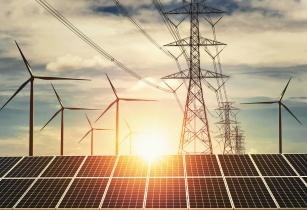Sub-Saharan Africa offers an alternative vision of how the energy transition will change power generation, according to research released by global energy consultancy Wood Mackenzie
Benjamin Attia, a principal analyst with Wood Mackenzie’s energy transition practice, said, “The evolution of sub-Saharan Africa’s utility business model, both on and off the grid, will fundamentally reshape the trajectory of global electricity demand and will be essential to the energy transition.”
“Sub-Saharan Africa has a persistent lack of electricity access, in part due to massive underinvestment in electricity infrastructure. Most of Africa’s public electric utilities are loss-making, with limited ability to maintain existing assets or invest in new ones. This hampers top-down growth in power supply and improvements in the availability, reliability and affordability of power,” said Attia.
But the rapid decline in the costs of renewable energy, coupled with innovative business models, could help sub-Saharan Africa bridge the gap between consumption and investment to provide universal, reliable, affordable and decarbonised access to electricity across the region.
Three fundamental macroeconomic trends underpin future electricity demand growth in sub-Saharan Africa: population growth, rapid urbanisation and structural economic transformation. This will contribute to strong growth in the region’s electricity demand. The region’s electricity demand has doubled over the last 15 years, and under Wood Mackenzie’s 1.5 °C Accelerated Energy Transition scenario (AET-1.5), could grow nearly eight-fold by 2050.
According to Wood Mackenzie’s analysis, opportunities are emerging beyond the grid for three customer segments, including residential, commercial, and industrial, and will collectively account for US$62bn of the total African electricity investment opportunity this decade.
Wood Mackenzie conservatively estimates that more than 100GW of distributed diesel capacity is operational across Africa today, and our findings suggest that at least 17 African countries have more distributed diesel generator capacity than they do grid-connected power-generation capacity. Across sub-Saharan Africa (excluding South Africa), consumers spend under US$20bn a year on fuel for back-up generators, around 80% of what they spend on grid electricity. Even so, generators provide only 7% of total electricity supply.
Distributed energy service companies are using a flexible prepaid service model to take advantage of the increasing affordability of solar and battery technologies in order to align cost, value and energy delivery. As more high-value customers favour cheaper, cleaner, more reliable captive solutions, cash-strapped utilities are likely to see reduced revenues without equivalent reductions in cost, so will face more difficulties in maintaining and expanding their networks.





















